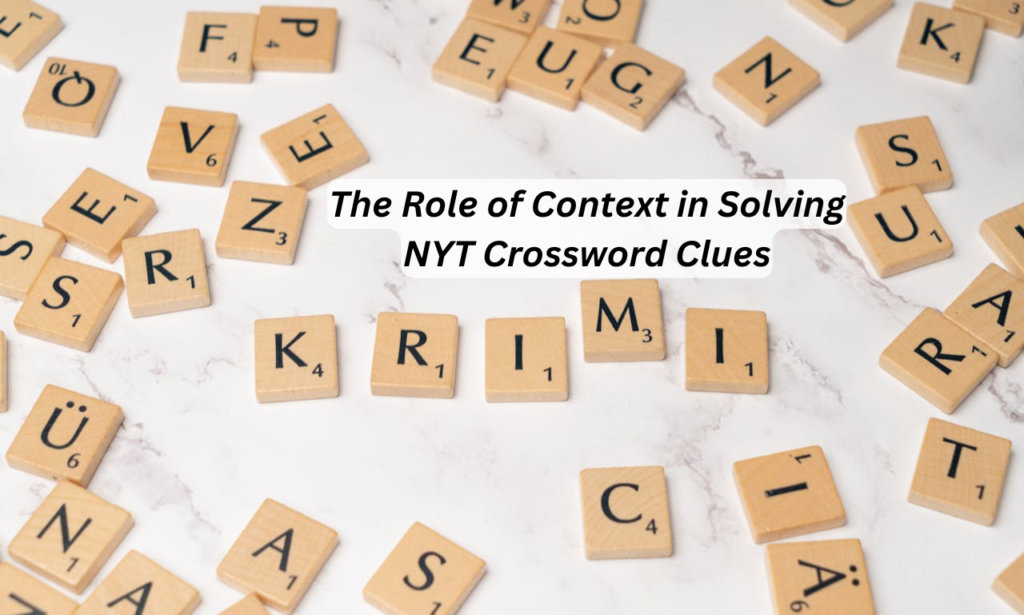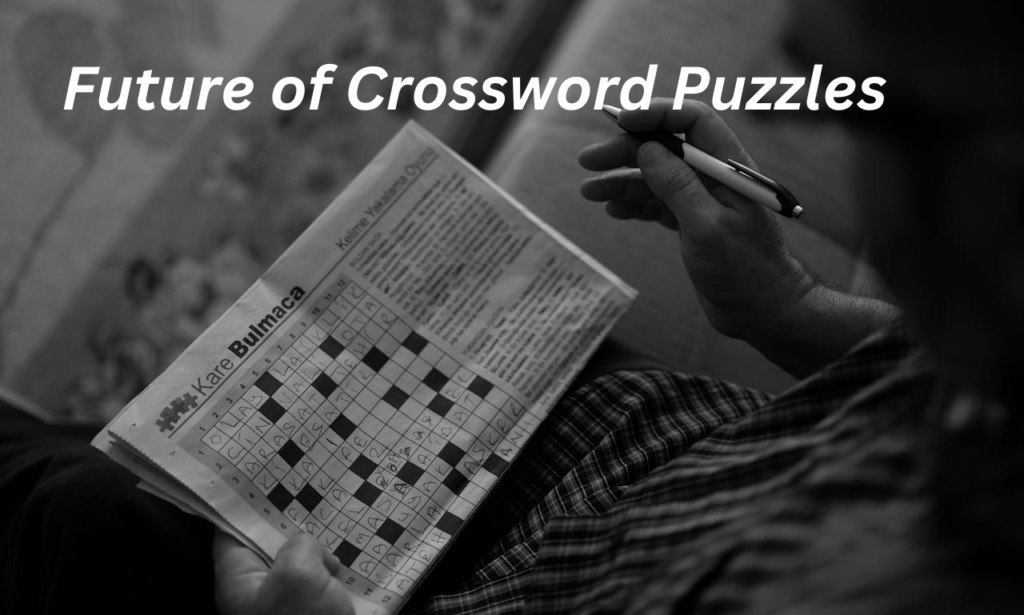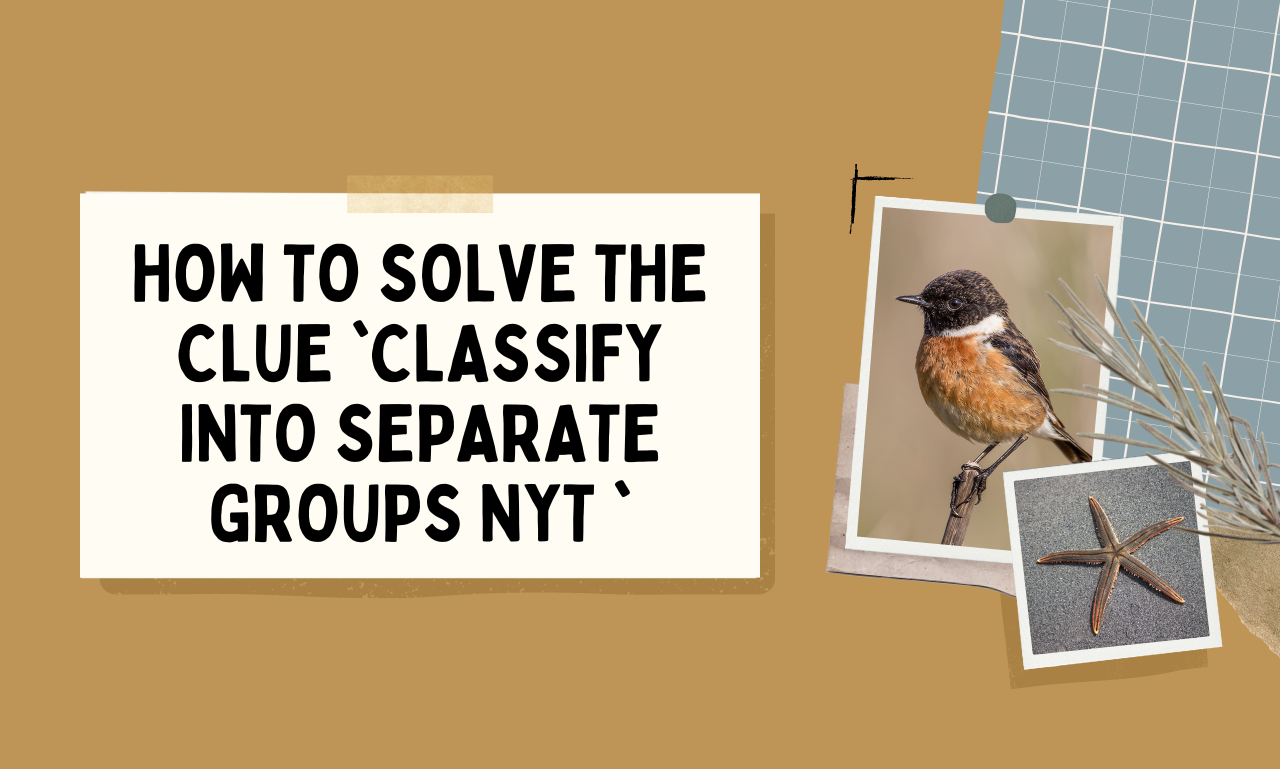Have you ever come across a crossword clue that left you puzzling for hours? One such clue is “classify into separate groups,” which has challenged both casual solvers and seasoned experts alike. Whether you’re a daily solver of The New York Times (NYT) crossword or a weekend enthusiast, this particular clue can stump even the best minds. But with the right approach, you can decode this clue like a pro!
In this article, we’ll explore various techniques and strategies for solving this intriguing crossword puzzle clue. We’ll also dive into common words and patterns to consider when encountering the phrase “classify into separate groups NYT” in a crossword context. Let’s get started!
- Understanding Crossword Clues: A Key Step in Solving Puzzles
- Techniques for Solving the Clue “Classify into Separate Groups NYT”
- The Role of Context in Solving NYT Crossword Clues
- Social Aspect of Crosswords
- Crossword Solving Tools and Resources
- Common Answers for the Clue “Classify into Separate Groups”
- The Fun of Solving NYT Crosswords
- Future of Crossword Puzzles
- Conclusion
- FAQs About Classify Into Separate Groups NYT
Understanding Crossword Clues: A Key Step in Solving Puzzles
To solve crossword puzzles effectively, it’s important to understand the nature of clues. NYT crossword puzzles often use clever wordplay, double meanings, or obscure references. The first thing to note when deciphering a clue like “classify into separate groups” is whether it’s a straightforward definition or part of a more complex wordplay.
Breaking Down the Clue
“Classify into separate groups” suggests an action of organizing or dividing things based on shared characteristics. This phrase points to a verb that describes sorting or categorizing. If you see this clue in a crossword puzzle, it’s essential to recognize that the answer will likely involve a term related to grouping, categorizing, or splitting something into sections.
Techniques for Solving the Clue “Classify into Separate Groups NYT”
Here are some common strategies to consider when faced with this clue:
1. Identify Synonyms
One of the most reliable techniques for solving crossword clues is to find synonyms. In this case, you can start by brainstorming possible synonyms for “classify,” “separate,” or “groups.” Some examples include:
- Sort
- Divide
- Categorize
- Segment
- Arrange
- Organize
These are the types of words that are commonly used to describe the process of classifying things into groups. Depending on the number of letters in the answer, one of these synonyms might be the solution.
2. Look at the Letter Count
The number of letters in the solution is frequently included in crossword puzzles. This is a helpful hint when trying to narrow down your choices. For example, if the answer to “classify into separate groups” requires a six-letter word, you could rule out options like “organize” or “arrange” and focus on words like “sort” or “divide.”
3. Consider Word Tense and Form
NYT crossword puzzles are known for their tricky use of tense. A clue might appear in one tense, but the answer could require a different tense or verb form. For example, if the clue is phrased as “classified into separate groups,” the answer might be in the past tense, such as “sorted” or “divided.” Always pay attention to the clue’s tense to ensure your answer is grammatically correct.
4. Use Crossword Puzzle Patterns
Another strategy is to use the letters you already have from solving other clues in the puzzle. For example, if you know the second letter of the answer is “O” and the last letter is “T,” you can use these letters to help figure out the word—perhaps the answer is “sort” or “slot.” This process of elimination can greatly speed up your solving time.
5. Think About Common Crossword Words
Experienced solvers know that certain words appear frequently in crossword puzzles. In the case of “classify into separate groups,” common words like “sort,” “group,” or “divide” are likely answers. Keeping these common terms in mind will increase your chances of getting the right answer more quickly.
The Role of Context in Solving NYT Crossword Clues

The NYT crossword is known for its creativity, and clues often require you to think beyond the literal meaning. The surrounding clues and theme of the puzzle can also offer helpful hints. For example, if the theme of the crossword revolves around organizational systems, such as biology or taxonomy, it might suggest that the answer to “classify into separate groups” relates to a scientific term like “taxonomy” or “categorize.”
When solving crosswords, always keep the broader context in mind. If the crossword theme is centered around certain professions, like librarianship or data science, you might expect the answer to be something related to organizing information, such as “catalog” or “sort.”
Social Aspect of Crosswords
The social aspect of crossword puzzles has long been an important part of their enduring appeal. While crosswords are often viewed as a solitary activity, they also foster social interaction, collaboration, and community building among puzzle enthusiasts.
One of the key social elements is collaboration. Many crossword solvers enjoy working together, whether it’s with family, friends, or coworkers, to solve a particularly challenging puzzle. Sharing different perspectives and knowledge can make the solving process more enjoyable and efficient. It also fosters a sense of camaraderie, as solvers combine their unique strengths to crack difficult clues. Crossword-solving teams are common in both casual and competitive settings, and many puzzle enthusiasts find joy in this collaborative spirit.
In the digital age, crossword puzzles have further enhanced their social aspect through online platforms. Puzzle apps and websites now allow solvers to compete against or collaborate with others in real-time. These platforms often feature leaderboards, timed challenges, and social sharing options, encouraging solvers to connect with a larger community of crossword lovers. Additionally, social media groups and forums are dedicated to crossword solving, where users share tips, discuss tough clues, and celebrate personal achievements.
Furthermore, crossword competitions have gained popularity, with events such as the American Crossword Puzzle Tournament attracting hundreds of participants each year. These events create a sense of belonging and friendly competition, bringing together solvers from various backgrounds to engage in their shared passion.
In conclusion, the social aspect of crossword puzzles—whether through face-to-face collaboration, online communities, or competitive events—adds a dynamic layer to the solving experience. It transforms what may seem like a solitary hobby into a shared cultural activity that promotes interaction, learning, and mutual support.
Crossword Solving Tools and Resources

If you get stuck on a clue like “classify into separate groups,” there are tools and resources available to help you. Some of these include:
- Crossword Solver Websites: Sites like Crossword Solver or Wordplays offer databases where you can enter a clue and get possible answers based on letter count and structure.
- Crossword Puzzle Dictionaries: Special dictionaries are available that cater specifically to crossword enthusiasts, offering quick solutions for common clues.
- NYT Crossword Archives: Reviewing past puzzles from the NYT archives can give you insight into recurring patterns and common answers that may be helpful for future puzzles.
Common Answers for the Clue “Classify into Separate Groups”
Now that we’ve covered the key strategies for solving this crossword clue, let’s look at some common answers you might encounter when trying to crack the clue “classify into separate groups NYT.” The precise response will depend on how many letters are needed, but here are some plausible options:
- Sort: A four-letter word that means to arrange things into groups based on shared characteristics.
- Divide: A six-letter word that implies separating items into distinct groups.
- Group: Another five-letter word that can mean to place items into a collective unit.
- Slot: A four-letter word meaning to assign something to a specific place or category.
These answers align with the action described in the clue and are common in crossword puzzles.
The Fun of Solving NYT Crosswords
One of the reasons people love solving the NYT crossword is the sense of accomplishment when a challenging clue finally clicks. “Classify into separate groups NYT” is a perfect example of a clue that requires careful thought, pattern recognition, and creative problem-solving skills.
As you continue solving crosswords, you’ll develop an intuition for spotting tricky clues and discovering solutions more easily. With the tips and techniques provided in this article, you’re well-equipped to tackle the clue “classify into separate groups” in the NYT crossword—and many other puzzles to come!
Future of Crossword Puzzles

The future of crossword puzzles is set to evolve with advances in technology, keeping the traditional charm of wordplay while incorporating innovative features. As digital platforms continue to grow, crosswords are likely to become more interactive, offering solvers instant feedback, hints, and dynamic puzzles tailored to individual skill levels.
Augmented reality (AR) and artificial intelligence (AI) could transform the crossword experience. AR could allow solvers to interact with clues in 3D, enhancing immersion, while AI-generated crosswords may personalize puzzles based on the solver’s interests and learning curve, increasing both challenge and enjoyment.
The rise of mobile apps has already made crosswords more accessible, and future apps may feature adaptive difficulty, social collaboration, and even competitive modes, allowing solvers to compete in real-time.
Additionally, inclusivity is expected to shape the future of crossword puzzles. Puzzles may feature more diverse clues and culturally relevant answers, creating an inclusive experience for solvers from different backgrounds.
While maintaining their intellectual appeal, future crosswords will likely embrace technology to remain engaging and relevant to new generations of solvers, blending tradition with modern innovation for an enhanced puzzle-solving experience.
Conclusion
The next time you encounter the clue “classify into separate groups NYT” in a crossword puzzle, don’t be discouraged! By using strategies like identifying synonyms, considering tense, and leveraging context clues, you can solve even the most difficult crossword clues. Remember to have fun with the process and enjoy the thrill of solving each puzzle, one clue at a time!
FAQs About Classify Into Separate Groups NYT
1. What does the clue “classify into separate groups” mean in a crossword puzzle?
The clue “classify into separate groups” in a crossword puzzle typically refers to the action of organizing or dividing items into distinct categories based on shared characteristics. The answer will often be a verb like “sort,” “group,” “divide,” or “categorize,” depending on the letter count.
2. What are some common answers for the clue “classify into separate groups”?
Common answers for the clue “classify into separate groups NYT” include words like “sort,” “divide,” “group,” and “arrange.” These words describe actions related to organizing or separating items into categories. The specific answer usually depends on the number of letters required by the crossword puzzle.
3. How can I use context to solve the clue “classify into separate groups”?
To solve this clue, consider the crossword puzzle’s overall theme or context. If the puzzle involves science, data, or taxonomy, the answer might be related to scientific classification (e.g., “taxonomy” or “categorize”). Looking at surrounding clues can also provide valuable hints to guide your solution.
4. What strategies should I use to solve the clue “classify into separate groups NYT”?
Key strategies include identifying synonyms for “classify” and “separate,” considering tense and verb form, and using the known letters from other puzzle answers. Also, think about common crossword answers, such as “sort” or “divide,” and apply process-of-elimination based on the provided letter count.
5. How do letter counts help when solving the clue “classify into separate groups”?
Letter counts narrow down potential answers by providing a structural limit. For example, if the crossword clue calls for a four-letter word, you can focus on answers like “sort” or “slot.” If it requires a six-letter word, possible answers may include “divide” or “assign,” making your solving process more efficient.

